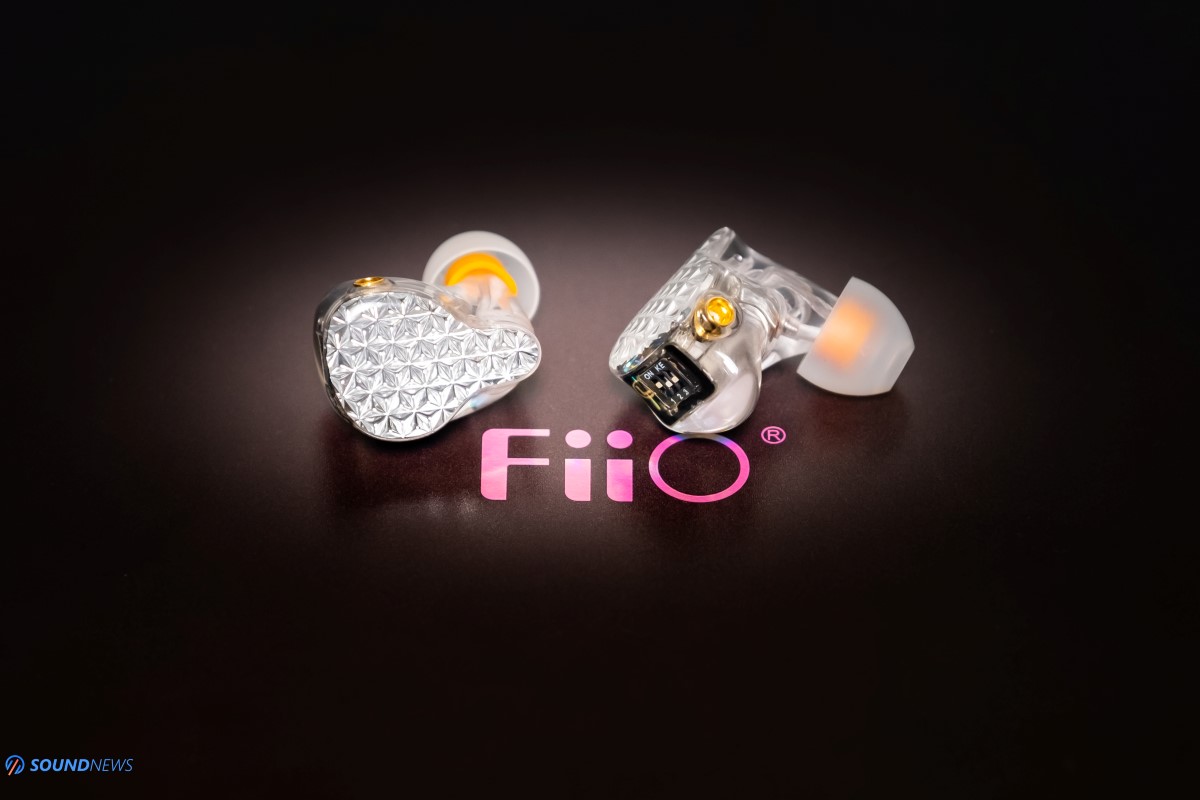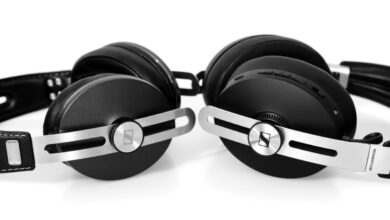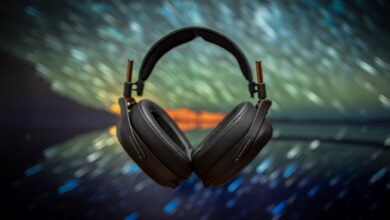FiiO FA9 In-Depth IEM Review – Switch Me On!
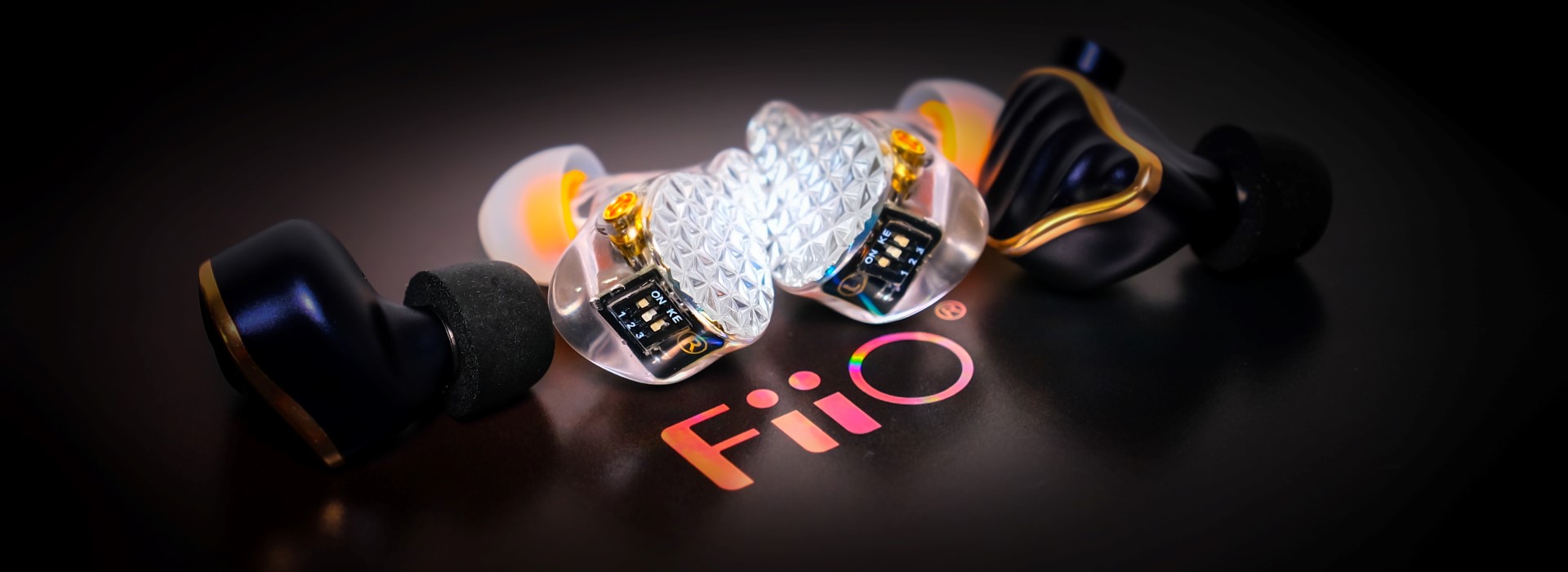
My Video Review:
Is FiiO ever sleeping at night? I always wondered about that. The sheer number of products they release on a monthly basis is staggering. Last month FiiO announced for immediate release four new IEMs: a beryllium plated single driver FD1, a true-wireless FW1, a new hybrid FH3 and their newest and the greatest IEM in their portfolio: the FA9 IEMs. When it comes to flagship IEMs, FiiO adopted a Tick-Tock model to keep a high interest in both their hybrid and all-balanced armatures IEMs, but instead of shrinking their size year after year, FiiO is making them bigger, better and packed with extra goodies. If in 2018 the spotlights were put on the hybrid FH5, in 2019 in was on all-armature FA7, then FH7 hybrid IEM came last summer that is still my daily driver and my no.1 recommendation at less than $500. It was natural that an all-armature-based FA9 would follow next and that time is now.
As usual, a higher model number, means there are more drivers inside, a new cross-over design, a bigger shell and a higher number of accessories. FiiO went with an attractive price point of $499.99 for their flagship IEM and I’m really curious how they stack-up against their own FH7 genre masters IEMs that I’m using for more than a year now.

Unboxing Experience
As with all their higher-end gear, FiiO prepared a really nice unboxing experience that is a bit reminiscent of their M15 DAP, where you have a card-board box, within a glossy FiiO box, within another matte box. I’ve experienced quite a few >$1000 IEMs that don’t come nowhere near as impressive when it comes to clever packaging, care and protection during shipping. FiiO did a really impressive job here with packaging as the first impression is quite positive.
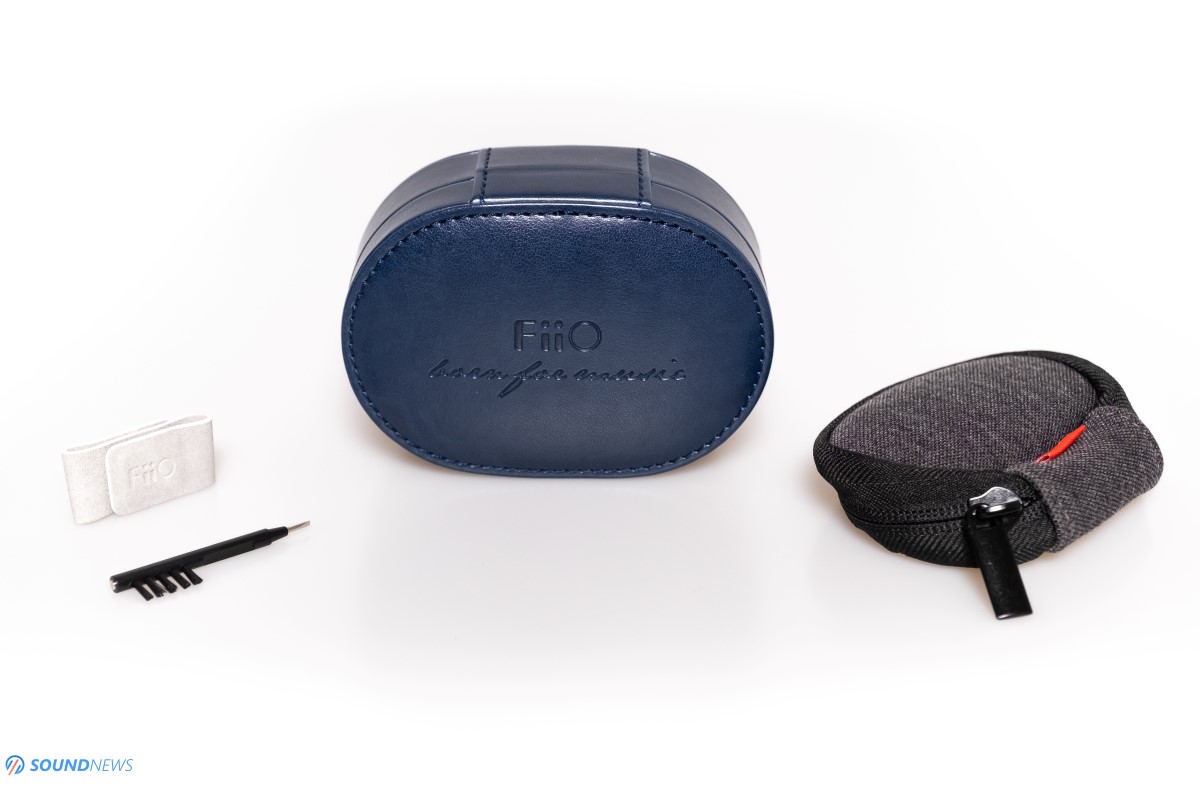
Package Contents
Upon opening the last matte-black box, I was greeted by the IEMs themselves with a see-through body and with a sparkly face-plate that is attracting a lot of attention. Between you and me, I like the stealthy look of the FH7 with its matte-black metal body a bit more, but the transparent shell is interesting to look at, as you can easily spot all its internal components.
FA9 are coming with a sturdy 8-strand monocrystalline silver-plated copper (or SPC for short) cable that I have already experienced with their FH7. There are several things that I like about this cable: it will not go down fast with that thickness, it doesn’t have any microphonics while rubbing against your clothing and its flexible but not too flexible, so it will not entangle easily in my jeans pocket how cheaper Chi-Fi IEMs are doing. Now, if FiiO would add another 2.5mm or 4.4mm cable in the package of the same quality in their next Tock, that would be some next level stuff (hint hint).
After taking the IEMs out of the foam that holds them, I am again surprised by the sheer number of ear-tips and accessories that FiiO put in this package. They added their HB3 leather case in here as well, inside it you will find a smaller zipper case that holds the magnetic cable organizer and a brush that also works as a tiny flat screwdriver. It will come in handy at moving those switches up and down on the IEMs themselves and more about that really soon.
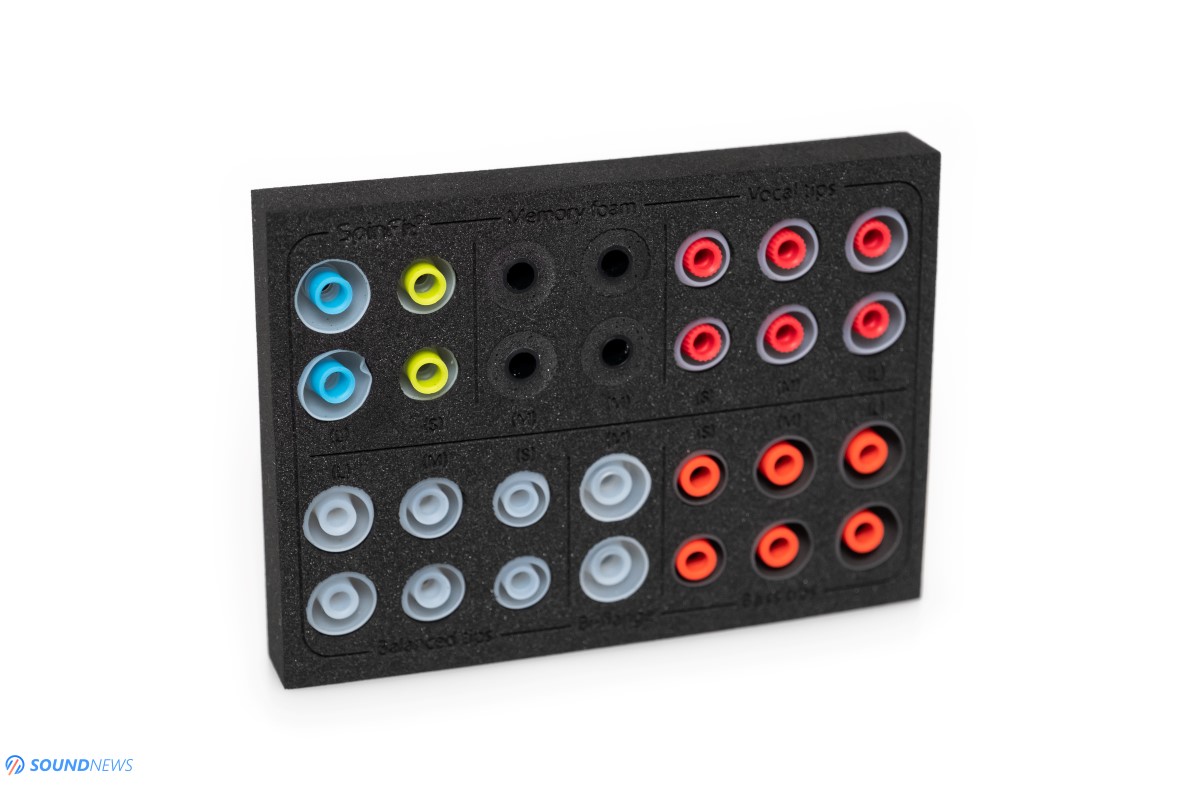
FA9, as FH7 is having a total of 30 ear tips! (or 15 pairs) split into 6 categories, as follows:
- Balanced ear tips (3 pairs of S, M and L – the standard white silicone ones) Here’s a free tip on how to improve your FA9: take out the default balanced medium sized tip and never use it again! Bingo! It’s that easy! I promise that any other tip will sound better.
- Vocal ear tips (3 pairs of S, M and L – the white silicone ones with a red inner tube). These are boosting the midrange presence, pushing all those voices closer to the listener. Love ’80-ties pop music? I bet you do; these are for you then.
- Memory foam tips (2 pairs in M size only – the black foam sticky ones) Here’s another free tip on how to improve your FA9: presuming you already followed my first tip, insert the memory foam tips and that’s it! Your FA9 will be singing at their maximum potential. These are my favorite tips
- Bi-Flange ear tip (a single M sized pair) Etymotic users know them very well. They should be inserted deeper for a better seal. Sadly, they don’t work for me, my ear-holes are not that large (Yet!) Insert at your own risk.
- Bass ear tips (3 pairs of S, M and L – the grey silicone ones with a red inner tube). Self-explanatory, are you a bass-head? You must consider yourself a true audiophile then, these will rock your world.
- Spin-Fit ear tips (3 sizes of S, M and L – the colorful ones). My particular pair came with the medium sized Spin-Fit pre-applied on them. These ones and the memory foam ones are my favorites. So, what Spin-Fit ear-tips are doing more exactly? They have a longer and a softer nozzle and will stay much more comfortable inside your ear without breaking the seal. They work nice for me as they are the most comfortable tips to wear.
If only FiiO would put a bigger focus to bundled accessories in their higher-end DAPs as they are doing with high-end IEMs, one can only dream.

Build Quality & Looks
The FA9 shell is made out high-end medical grade resin and it is manufactured by advanced 3D printers. What FiiO is trying to tell is that is should resist a lot of abuse, it is very slippery so inserting them in and out is very easy to do and their size and shape is very consistent unit after unit. The shell is filled completely with resin, so their internals will not bounce around how I’ve seen on some custom monitors. I can’t spot any air-bubbles in the resin, so it looks really well made and put together. The full resin shell is also making them a bit heavier and I quite like that, as it adds a bit of confidence when you are holding them. The faceplate seems to be diamond cut offering a dazzling effect when light is hitting it from different angles.
Although the shell size is considerably bigger to all their IEMs including FA7 and FH7, it is comfortable to wear in the long run and they never fell off my ears, how bigger IEMs from others did for me. The outer nozzle is having a diameter of about 5mm – it is the standard sized one, so you can easily use your ear-tip collection. The nozzle depth is at about 5mm in length, so again lots of Comply, Spin-Fit and other ear-tip brands will work with these no problem. The MMCX connector is buried in the shell and doesn’t stick out too much how it was the case on their FH7. I like that you need to apply quite some force to attach and detach the cable. FiiO has more than 5 years of experience with this connector and I’m pretty sure they found the perfect balance between being flexible and strong at the same time.
I personally would like to see some custom face-plates easily attached and detached from these IEMs. Just imagine separately purchasing lots of custom faceplates that would make your IEMs always fresh, personal and unique looking. Here’s an amazing idea that I would like to materialize some day and when that happens, remember where you’ve read that first. Are you up to the challenge, FiiO?

Tech inside FA9
From four drivers in their previous all-balanced armature FA7, FiiO jumped directly to 6 drivers, having two of them for you bass, midrange and treble needs. If you followed FiiO by the years, you would observe that they already created some very strong bonds with few partners and Knowles is probably the biggest connection they made. You are pretty cool as an IEM manufacturer when you are using off-the-shelf Knowles armature drivers, but you are considerably cooler when they make you custom drivers according to your specifications. That is high-end audio and FiiO is doing that for a few years now. Those 6 drivers are all custom made for FiiO. Want to reverse-engineer and copy those FA9 or FH7? Good luck with that! I’m sorry, but you can’t order the same drivers from Knowless.
All the balanced armature IEMs I’ve tried had a very fast response time and were always quite impressive in terms of details, but they struggled with delivering oomph and slam a proper dynamic driver would provide in terms of bass and more importantly in the sub-bass region. FiiO knows that really well and to counterbalance this issue, they added a subwoofer like design at the end of those bass drivers. You can actually see that ultra-long sound tube with your own eyes, it stretches for 80.6 mm, yes for 8 fricking centimeters that works as a low-pass filter, filtering out the midrange and treble excess and enhancing the bass performance and its sustain.
FiiO implemented a four-way crossover design for the first time in this one, so that each driver will work seamless with its brethren. It is kind of interesting seeing that besides high frequencies, FiiO is taking extra care of the ultra-high frequencies as well or top octave as I am calling it. I’m already expecting some extra details past 16 KHz and I’m quite curious what MiniDSP EARS will say about that too.
By far, the coolest thing FiiO adopted in FA9 are those 3 tiny adjustment switches. I never saw anything like that in any IEM design and I’m eager to try them all for myself and combine some of them too.
The switches are working directly with the electronic crossover and allows a fine tuning not only of the sound, but also of the sensitivity and impedance of the IEMs!
- S1 will make you choose between a 16 and a 32 Ohm impedance, resulting a difference of about 3 dB between them. By default, that switch is engaged, making FA9 easier to drive but more prone to noise from the source.
- S2 is a treble boost switch. By default it is disabled and if you would like a crispier top-end, simply turn the treble boost on for more treble presence. More about this very soon.
- S3 is the bass boost switch and it works slightly different to the treble boost. When the switch is engaged, bass quantity will be tamed, considerably reducing the sub-bass performance – this is the default position. Disabling that switch (Off position) will increase sub-bass performance and in my humble opinion, this should be the default position for a much better sub-bass presence.
Of course, you can match between them according to your music, to your source, to your mood in that particular day and to your musical preference. I consider that FiiO opened a pandora box with this one as I’m sure there is a setting that works better for each one of you, I’m eager to test all those switches for myself so let’s do some music listening.

Sound Performance
I. Preliminary Impressions (in its stock form)
Generally speaking, when I’m thinking about armature-based IEMs, I’m thinking about speed, about fast decays, about lots of details and correct positioning of all the notes in a 3D field and not a lot about warmth or about a magical midrange. I not sure what particular specs FiiO engineers did sent to Knowles, but in its stock form, besides having all the traits I mentioned before, FA9 is also incredibly natural sounding in the midrange. Natural sounding and armature-based IEMs should never be in the same sentence, but here we are with something completely different that will forever alter my preconceptions about armature-based IEMs. A nice midrange presence, an outlined mid-bass performance and a super defined upper treble are the first words that are coming to mind when describing the FA9 performance.
Spin-Fit ear tips are really comfortable to wear in the long run, but for my ear-canals, memory foam tips are having a better seal, so this is what I will be using for the rest of this review.
Coming from a FH7 hybrid IEM that I used for more than a year, FA9 is having a slightly different tonality in its stock form. Without taking into consideration that frequency response which I’ll mention in a minute, FA9 stood out immediately with a higher percentage of detail retrieval from my favorite tunes, I simply heard a little bit more. Especially the top-end was considerably clearer sounding, but mind you, not sharper or brighter sounding. There was simply a higher degree of detail and I could easier focus on anything in that region.
Roses are red and violets are blue compared to their former flagships FH7? Yes and No. Yes, because there is more in terms of details, there is a higher transparency and a faster pace too. However, the sub-bass performance took a small hit.
I was toe-tapping considerably more with FH7 because the thump was harder and the air hitting my ear-drums would be bigger in size as well. That huge 13.6mm dynamic driver and that patented S.Turbo 2.0 sound tube was simply increasing my mood levels and would make my body move in the rhythm of the music. Without thinking too much, I knew what I should do next to come as close as possible to the FH7 and who knows, maybe beat them at their own game.

II. Switch me On!
It is obvious that I will be playing with the bass switch first and with the rest later on.
S3 switch or Bass limiter switch stays in On position by default. Compared to the rest of the switches, in the default On position, FiiO is actually reducing the bass quantity by enabling some kind of power-limiter to those huge bass drivers and the Off position disables that limiter. So, in reality the bass switch in Off position is not working as a bass boost, but it simply lets those drivers do its job without nothing standing in its way.
Imagine my reaction when finally, I’ve heard sub-bass information even down to 20 Hz, what a huge positive improvement! Mind you, this setting changes the sub-bass performance and slightly touches the mid-bass performance. Sub-bass went from missing in action to Oooh, there you are! The difference is bigger that what I have expected, as the sub-bass raised at the level of mid-bass and midrange, offering a linear and extended frequency response down to the lowest octaves. I would put this as the default position, as it is not hurting the mid-bass performance, it doesn’t spill over those frequencies and most importantly the speed, decay and detail are not being affected at all. Now we are talking! FH7 is not as courageous anymore, because FA9 started pushing more air down there, bass slam improved considerably and toe-taps came back in full-force. There is still a tiny bit more air slam with FH7, but not by much and if I would not listen and compare them critically, I might not even spot a difference.
S2 or the treble switch is the only switch that stays in the Off position by default. Compared to the bass switch, S2 is an actual electronic treble booster. In all honesty, I find the default Off position mighty fine sounding and the treble performance of FA9 in its stock form is one if its stronger points. On one hand it has less brightness compared to the FH7 in the most sensitive part of our hearing (5 to 8 kHz) so you could listen to them using a wider selection of audio sources, even bright sounding ones. On the other hand, FA9 is really something special in the top octave (past 16 kHz), where it simply challenges the best performing IEMs I ever tried. FA9 is not boosting those frequencies at all, I’ve heard them linear but extended and crystal clear in its default position. If you are one of those who likes to have a crispier treble performance, then simply toggle that switch up and enable the treble boost.
Surprisingly, it is not transforming FA9 into a bright ugly mess, but enhances the whole treble response just by few dB. For a wild and super vivid experience with your electronic music, rock and metal tunes, I recommend enabling both the treble and the bass boost for a fun V-shaped experience.
S1 or the impedance and sensitivity switch is another uber interesting gizmo that is more important than you might think. First of all, it is not changing anything in the frequency response so whatever setting you choose, it will alter only the impedance and the sensitivity of the IEMs, nothing more. By default, the high sensitivity of 113 dB per 1mW and a low impedance of just 16 Ohms is enabled, making them one of the easiest IEMs to drive and that is certainly so in my IEM collection, even beating the FH7 with their 111 dB per 1mW sensitivity.
Now here is the coolest thing where this switch might come in handy. In all my headphone amps and DAC reviews, I am mentioning the background noise as it can negatively impact your listening pleasure. When I was reviewing the Audobyte HydraVox DAC and headphone amp combo, I was really mesmerized by its performance, but saddened by that slight hiss with FH7 IEMs. I immediately popped that switch down and from 16 Ohms the impedance rose to 32 Ohms, I connected them to the HydraVox stack and here it was: a complete black void of…simply nothing. I immediately detached them and I’ve tried a desktop PC, a laptop and a smartphone. Holy mother of Odin! It actually works! The hum and the hiss went away or considerably lowered its intensity, depending on how much noise would come from the source. Even the noisier sounding Burson Conductor 3X Performance was considerably more enjoyable to listen to with these by increasing their impedance.
This switch is simply a life saver. There is a ton of great sounding portable DAPs that are plagued by a noisy headphone output, most of the desktop PCs, laptops, tablets or smartphones are also far from perfect when it comes to IEM pairings. If you don’t have an iFi Audio IEMatch or EarBuddy at the time of listening, you are simply screwed.
FA9 doesn’t need any of that, because it has all that tech inside it. My 5-year old Lenovo Thinkpad went from garbage to completely silent with movies and shows, my tablet and smartphone are now extra quiet and all my desktop headphone amplifiers are suddenly IEM friendly. Honestly now, this switch is a real problem solver. I want it in all their high-end IEMs and I hope that FiiO would not patent it, so more manufacturers could adopt it in their future IEMs. FiiO please put it the FH9 too, we will thank you later on.

III. Transient Response
In its stock form, FA9 are impressive in terms of speed and fast decays and that shouldn’t come as a surprise as most well-designed all-armature driver IEMs are sounding this way, having a speedy approach to music reproduction. In terms of punch, FA9 are pretty good but it is not something to be impressed by. There is a decent amount of kick, the air mass that goes towards you is big, as you can feel a very defined soundstage and deep presentation as well. I wanted a bit more oomph, more fire in my music, more emotion and more body hits.
This is precisely why, I strongly recommend putting switch no.3 in the Off position, unleashing the kraken in that region and unlocking the sub-bass to its fullest potential. Everything I wanted FA9 to be in its stock form, is cured by a single switch and I really don’t get it why FiiO didn’t put it in this position by default. Disabling the bass limiter is improving not only the sub-bass performance by lifting it up at the same level with mid-bass and midrange, but also increases the slam and the amount of air that will be hitting your eardrums. Being a transient response nut by definition, I simply don’t see myself ever touching this switch again. Want more slam, harder punches and a snappier and more engaging performance? Then simply disable the bass limiter and raise those horns high. This immediate change is putting FA9 extremely close to the best hybrid IEMs I’ve tried to this date. FA9 is just by a half notch less impactful compared to the FH7, but that is Ok by me, as FA9 will be more than enough to impress an electronic and rock music lover as myself.
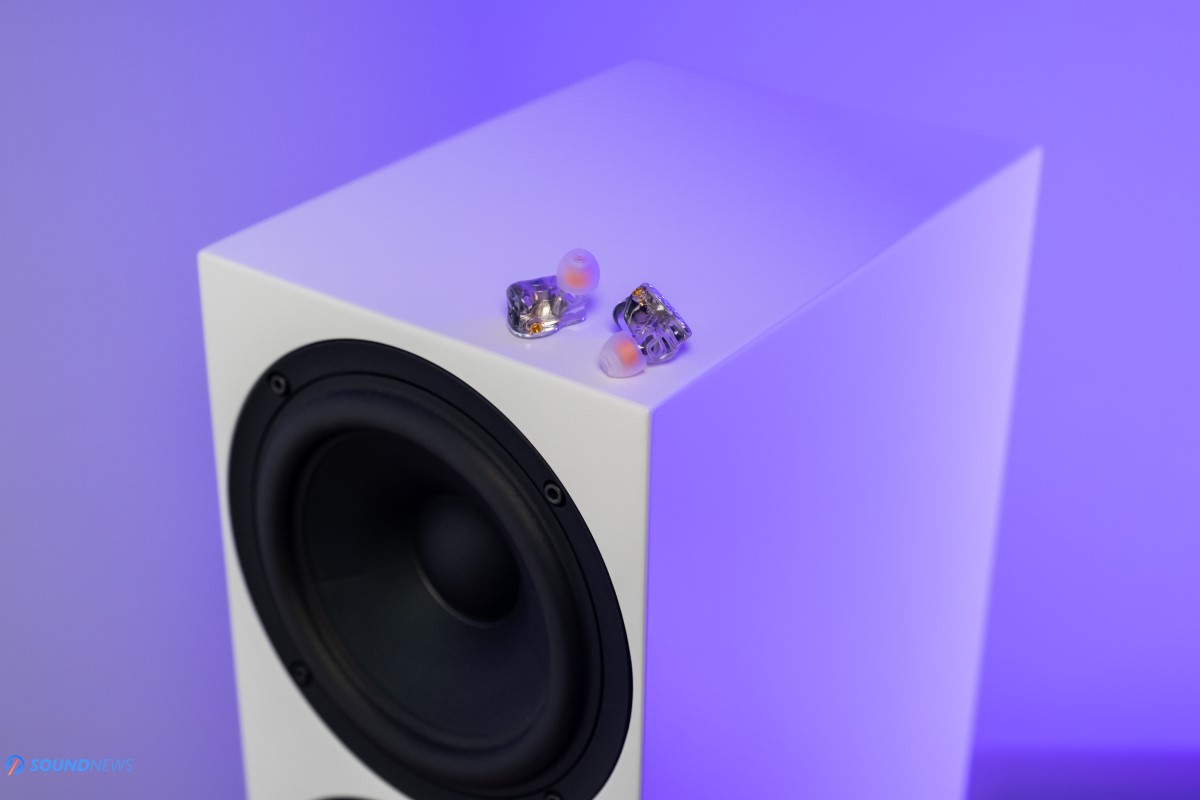
IV. Soundstage & Depth
This is another key area when I feel that FA9 knows how to arrange every single musical note and put it precisely in its place around the listener. I’m considering FA9 as a wide sounding IEM and if you are searching for air and depth information, there is plenty of it in this one. After listening to few live-recorded albums, I was easily hearing the singer a bit closer to me, the main instruments felt on a second layer behind the singer and all the percussion work and drums somehow behind everything in a believable and natural manner. The deepness and that layering is in a higher class compared to every single IEM FiiO has ever released to this point and if I’m closing my eyes, I could bet that I am listening to a great pair of full-sized headphones.
It is a bit weird inserting FA9 so deep in my ear-canal, but experiencing all my music around me and not inside my head is quite interesting. In my opinion, FA9 is already performing at a very high level and it will be difficult to outperform it in the future as it is already shooting for a top spot in my most recommended IEM list.
If you would like to have even a wider and a deeper performance than that, I recommended going balanced with whatever source and amplification you might have. In my own experience, from testing tens of sources and amplifiers, a true-balanced design should provide a close to zero channel crosstalk. If in a speaker setup that might not be important at all, because I can hear with my left ear what the right speaker is playing, but in a headphone setup that is considerably more important than you might think. In a well-designed desktop or portable setup with minimal channel crosstalk, there is simply a much bigger distance between the farther right sound in your right headphone to the farther left sound in your left headphone, creating a bigger air bubble of sounds from which your brain starts picking up musical notes. The lower the crosstalk = the bigger the air bubble will be and a wider soundstage will be experienced with your headphones. Yes, even tiny IEMs can sound big, spread-out, deep and in a balanced setup, FA9 is sounding exactly like that.

V. Frequency Response
When I was explaining the difference between all those switches, I wrote a lot about the frequency response, so I will be shorter in here and will be going straight to the point.
Sub-bass in the stock form is missing a lot of intensity and I’m simply unable to hear the sub-bass layers that I’m normally spotting in my electronic music. I was always searching for them and I had hard time detecting them. The decrease of the thump and impact wasn’t cool to experience too. Change the position of that switch and everything goes back to normal, sky is bluer and sub-bass starts pounding with a bigger force. Finally, sub-bass layers came back and I can spot them much easier now. With this setting, FA9 are offering an extended and linear sub-bass performance and it should remain in this position, if you ask me.
Mid-bass is always extended, often times it wants to grab your attention and no matter the position of all the switches, mid-bass doesn’t move up and down too much as the rest of the frequencies do. It is a bit more defined and slightly elevated for an all-armature IEM, but it is pleasing to experience all that fullness and warmth in such a small shell.
Midrange was also an eye opener for me, it seems that those switches are not changing much in terms of midrange intensity or presence. There aren’t hollow voices or thin guitars on this one, dryness is simply nowhere to be found as FA9 is fuller sounding in here, denser sounding too and I quite enjoy this kind of performance, because they remind me a lot about my desktop planar headphones that I am using daily. Coming from the FH7, I immediately felt a heavier and more life-like midrange that captures my attention. It is a rare phenomenon when I can attribute words as natural sounding to armature-based IEMs, but times are changing and FA9 is exactly that type of IEM.
Treble is quite a shapeshifter as it goes up and down multiple times and it really depends of what music are you listening on this one. There is possibly a drop in the lower treble region that completely scares the brightness away. In the most sensitive part of our hearing, it is back in full force and there is plenty of it is terms of quantity and quality and it will persist in this form even past top octave. Somewhere past 5-8 kHz it is becoming linear, very present, very clear sounding, really extended, but without a trace of sharpness. One of the most important aspects is that FA9 is not going for peaks but instead chooses small dips that can be overlooked. I don’t like peaks in the treble (FH7 has a little bit of that), FA9 doesn’t have them and sounds coherent and linear top to bottom. If you love those cheaper Chi-Fi IEMs that are boosting the treble area, simply enable the treble boost and FA9 will sound treble oriented moving those spotlights from bass and midrange to this area most of the time.
All in all, with the right tuning (S1 On or OFF, S2 Off, S3 Off), FA9 are not that far off from my linearity curve and are sounding quite balanced in terms of frequency response with only a few dips in the lower treble that can be overlooked.

VI. Measurements
After offering my full-blown subjective opinion, it is time to put them under a magnifying glass and see how they perform. When it comes to measurements, my best friend is still the Benchmark HPA4 as it is as linear as headphone amplifiers could go and I used both the Matrix Element X and the Audiobyte HydraVox as the main DACs. The measurement rig was the MiniDSP EARS calibrated with IDF (IEM Diffuse Field) compensation files. Do note that MiniDSP EARS is not following any IEC standards, meaning that my readings can’t be used as reference measurements, I’m doing them just to get a general idea about their results and sound signature.
I’ve measured them only by using the memory foam ear-tips as all other ear-tips would not offer a perfect seal, completely destroying the bass performance. I’ve measured them more than 15 times as finding a perfect fit and a complete seal was quite a challenge.
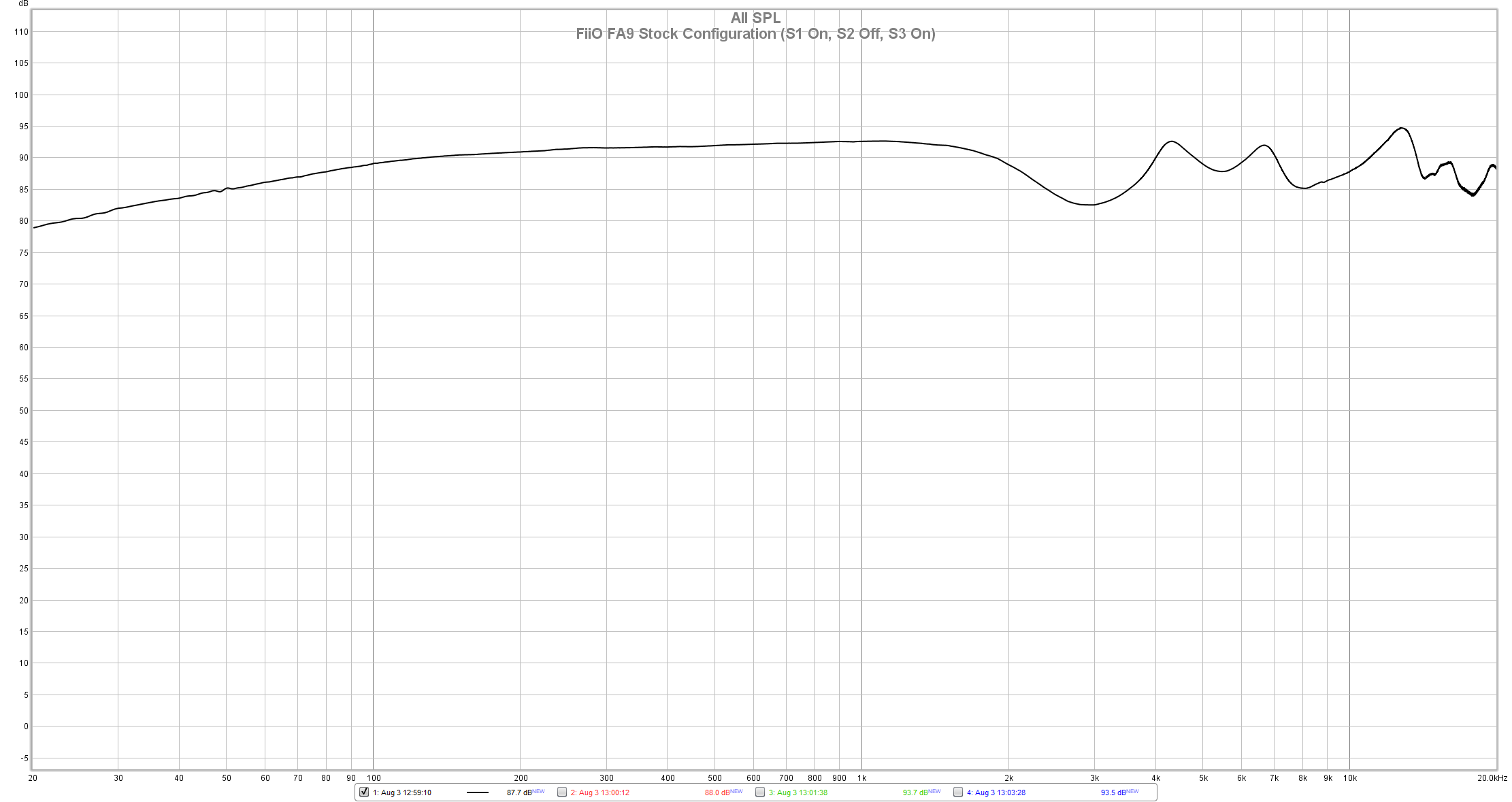
Here is their RAW measurements in its stock form, as you can see it looks perfect in the mid-bass and midrange, there is a serious roll-off in the sub-bass that was immediately felt and there is a dip in the lower treble that’s scares some of the brightness.
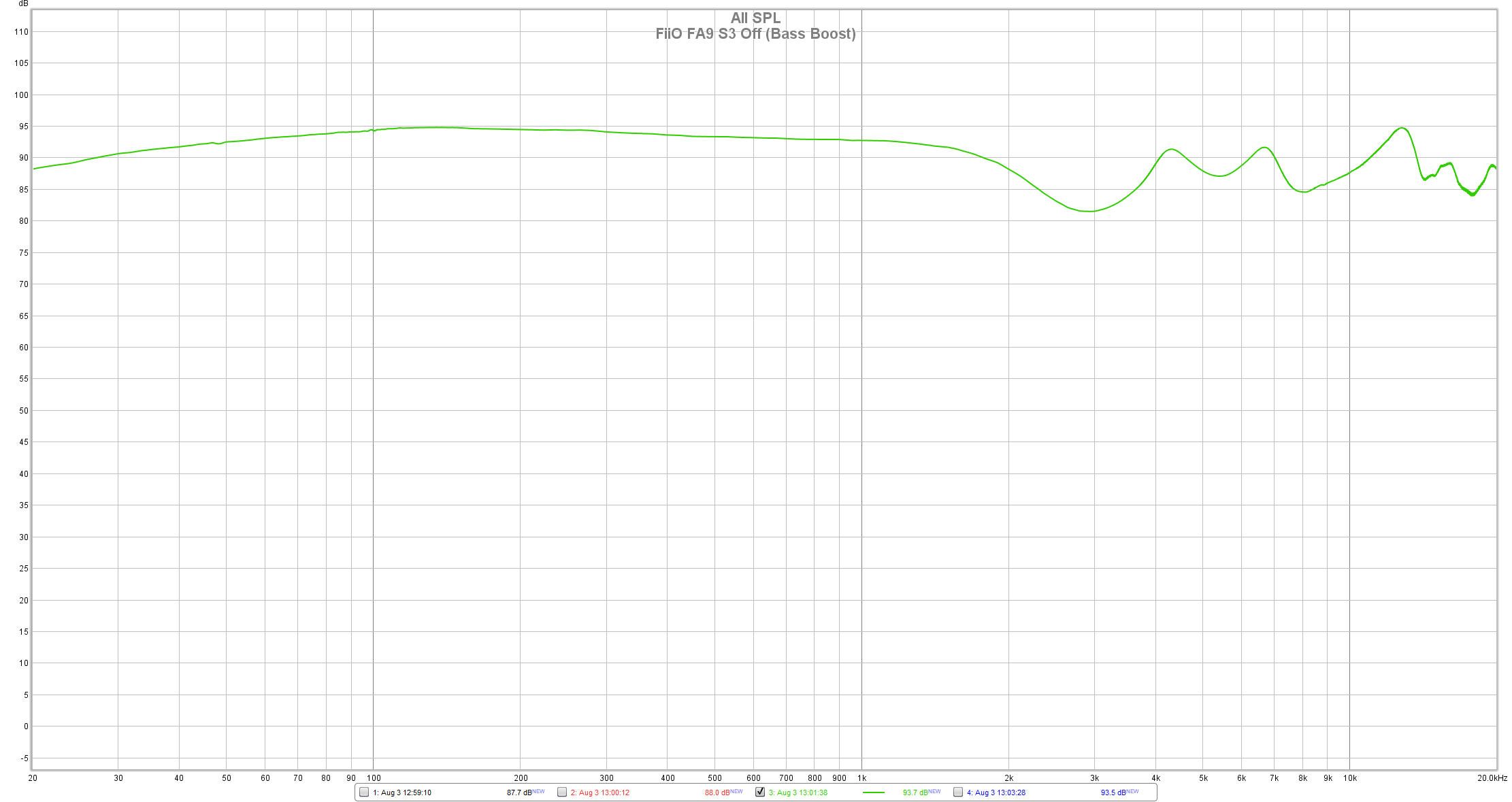
Disabling the bass limiter, I’m getting this reading, this is what I’m talking about. A much better performance top to bottom, with a clear upgrade in the sub-bass region that competes with higher class hybrid IEMs. Mid-bass and midrange are not affected at all by this switch and I’m really glad to see that.

Enabling the bass limiter back and enabling that treble boost, I’m getting this reading. As you can see, it affects only the treble area, mostly past 4kHz and it moves everything up by about 5 dB. Not a huge increase in treble presence, but a consistent one, it is not really overdone in my book but is making everything pop and shine in that region.
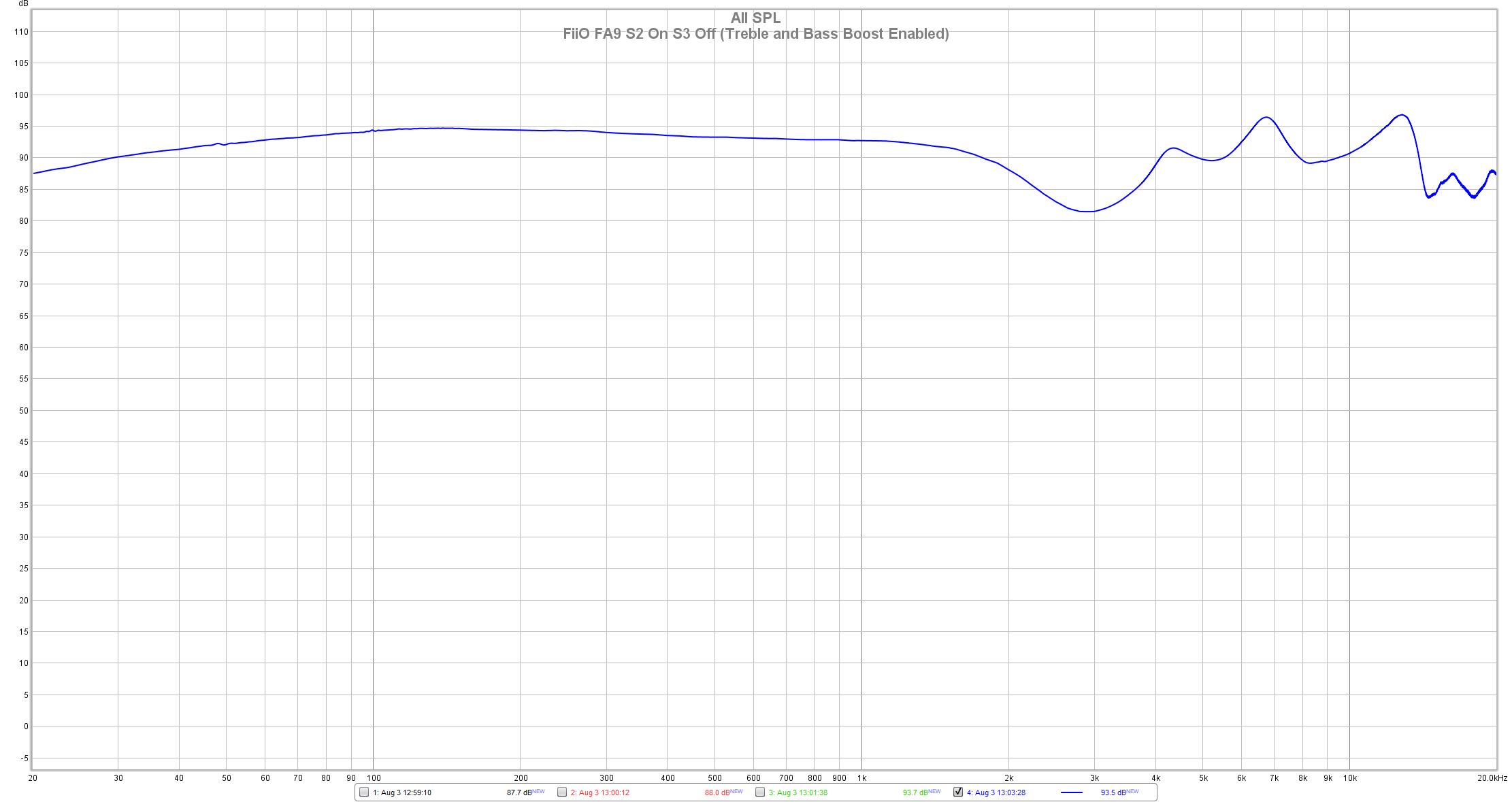
If I am disabling the bass limiter and if I am enabling the treble boost, I am getting this funky image. It looks almost perfect, except for that dip in the 3kHz area, this is the most fun setting as both the bass and treble are boosted for a fun V-shaped experience. This is by far, the most fun sounding setting, give it a try.
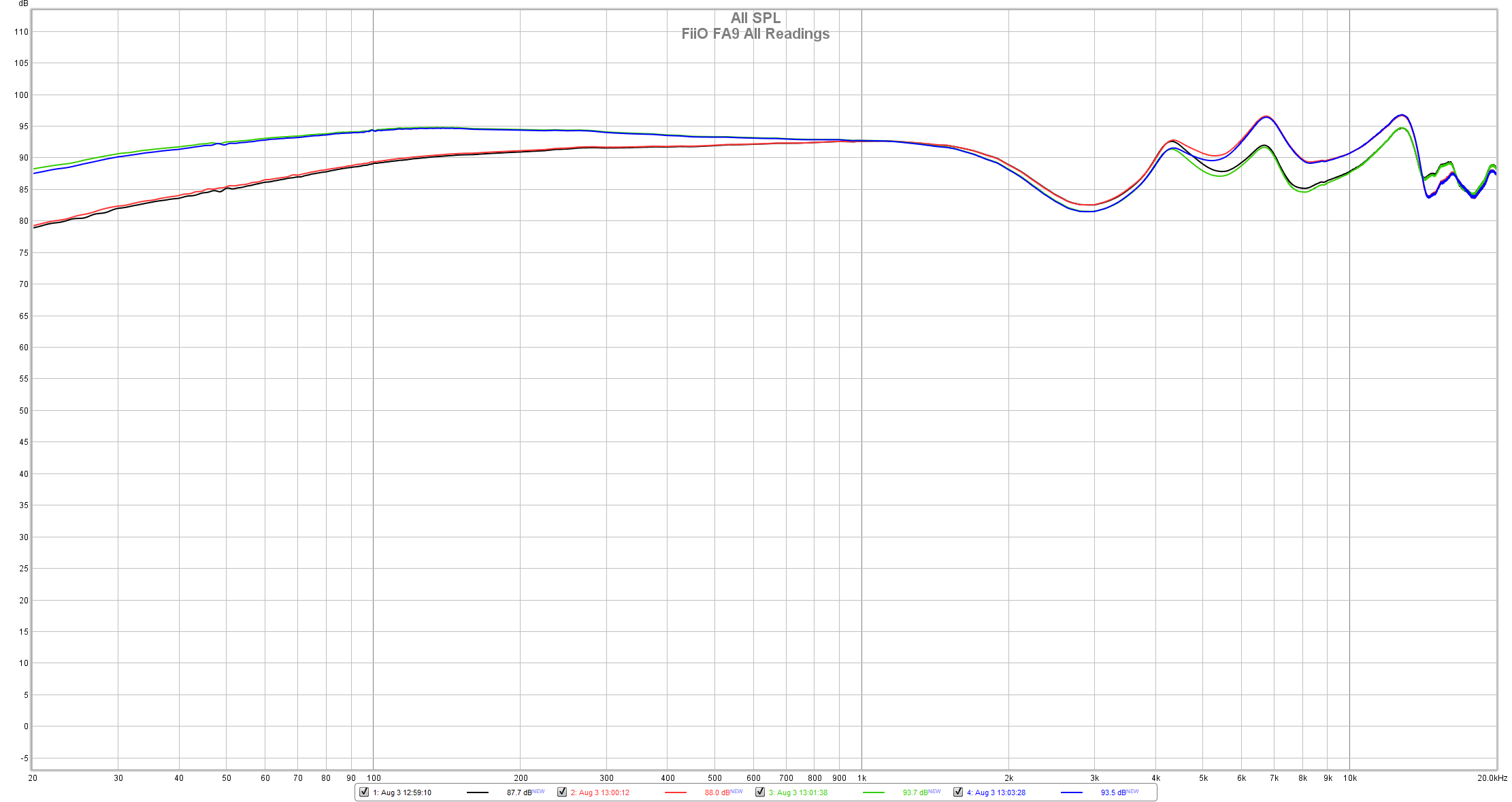
Here are all the readings overlapped and as you can clearly see, the stock black one is the most boring one. For the next readings I disabled the bass limiter as this my reference setting most of the time.

Total Harmonic Distortion at 85 dB of volume stays at a very respectable 0.63% which is very low considering it is an all armature driver, only the bass region exceeds 1% of distortion by a very small margin.

Its spectral decay is absolutely perfect and it outperforms all dynamic driver headphone I have ever measured and even comes close to the fastest sounding planar-magnetic headphones. This is not a surprise for me as it is a rule of thumb that balanced armatures are extremely fast sounding with minimal ringing, rise and decay.
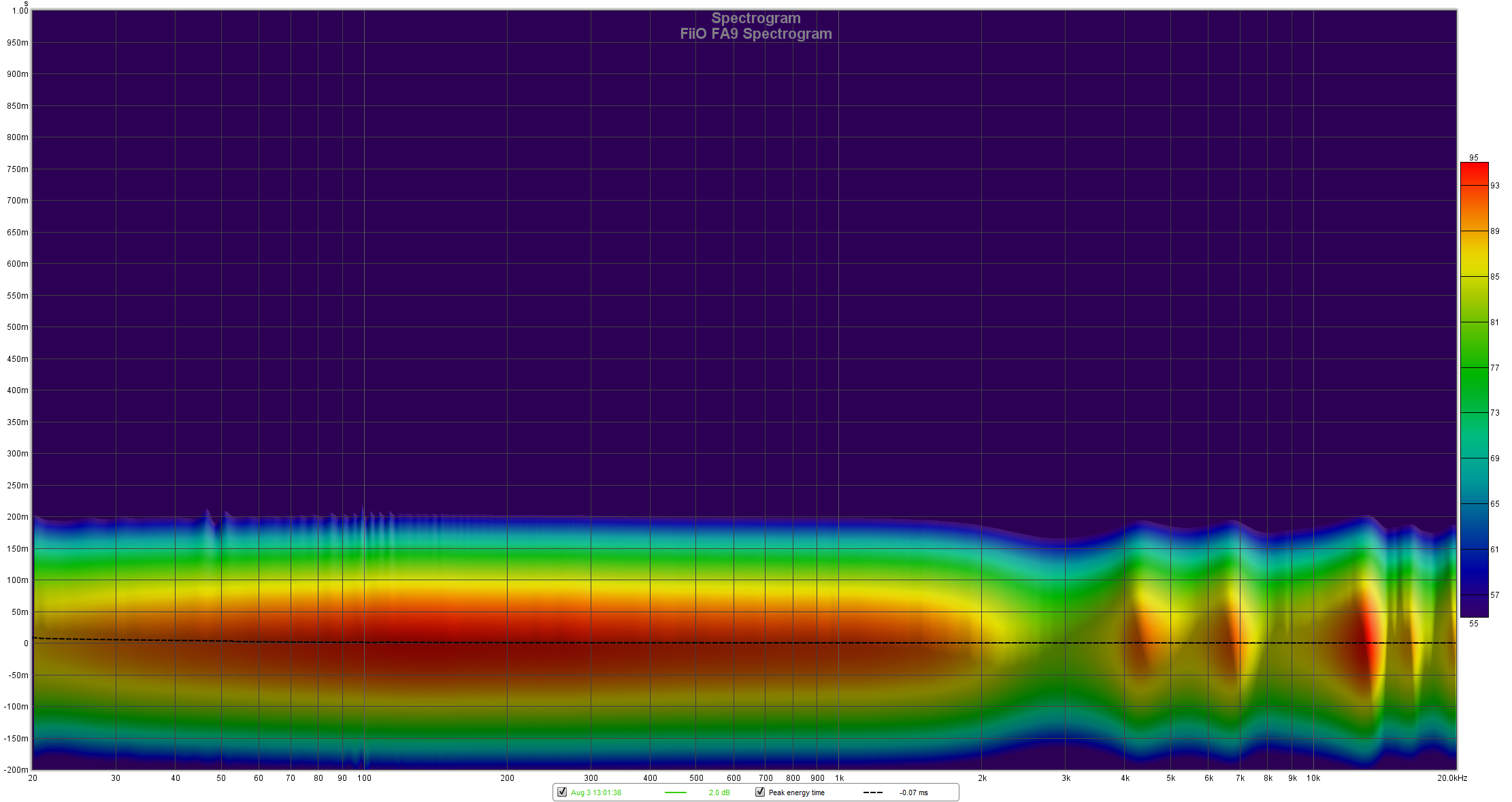
Spectrogram and waterfall are looking good too, there isn’t any grain showing up in those readings, meaning that again FA9 has minimal driver ringing.
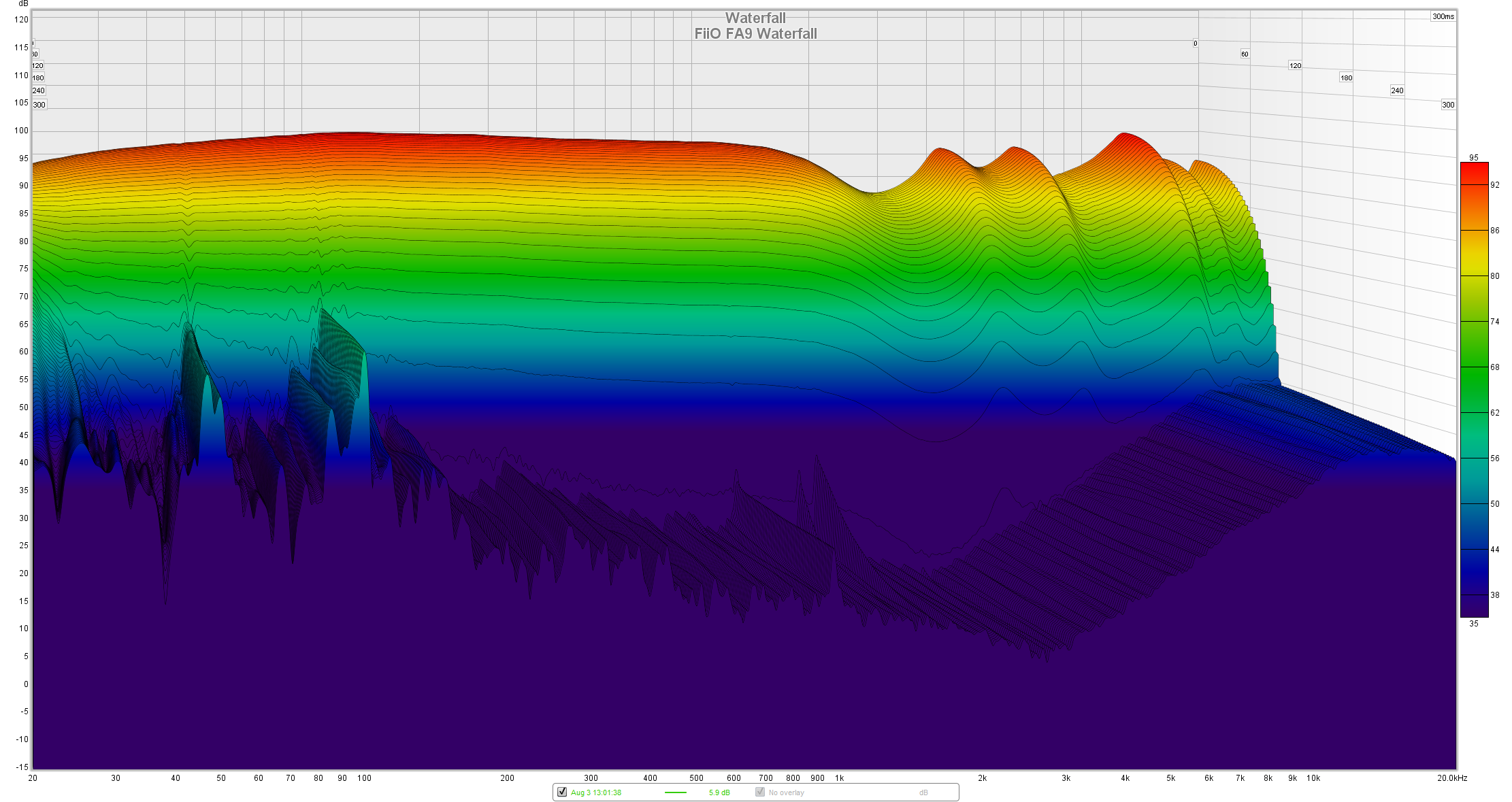
Overall, I recorded a low THD, among the best spectral decay and waterfall and quite a linear frequency response by disabling the bass limiter. It is not that fun sounding in its stock form and I don’t recommend that position to anyone. The bass and treble switches are changing only those respective frequencies and are not spilling over their neighbors which is really nice to see.
VII. Comparisons
It was natural comparing the newest and the greatest with the past flagships that FiiO released so far and here we go.

FiiO FA9 ($499.99) VS FiiO FA7 ($299.99)
Both are 3D printed headphones, my particular pair of FA7 is really colorful looking and I wish some of those face plates would be used on FA9 too somewhere in the future. FA7 is considerably smaller in size as it doesn’t have those switches, has a fewer number of drivers and doesn’t have that 8-centimeter-long acoustic filter. FA7 has considerably less accessories inside its package, I really miss the Spin-Fit ear-tips and that leather carry case of the FA9. The cable quality is nice, but it uses only 4 SPC conductors instead of 8 on the FA9.
FA9 packs considerably more tech inside, uses higher performance drivers, more of them too and a super-cool electronic cross-over which controls not only the lows, the mids and the highs, but the super-highs as well.
In terms of sound performance, I consider FA7 as a jack of all trades but master of none. It is good sounding, no doubt about that, not nothing is really standing out in that one. It was almost perfect in all key areas, but never really reached that point for me. Bass quantity wise, in their stock form, FA7 beats the hell out of FA9 but once I’m disabling the limiter, the outcome of the game changes in favor of FA9. FA7 feels as having a softer bass which lingers a microsecond longer compared to FA9. The newest one, is faster in there, hits harder especially with a nicer sounding DAP and it is considerably more controlled in the sub-bass compared to FA7. Midrange is warmer and is really natural sounding on FA9, I simply wish more IEMs would adopt this kind of tuning. FA7 is a bit dryer sounding in there, voices while sounding pretty detailed and clear are never grabbing my soul and are not going super low in their tonalities. Midrange is just fine on FA7 and it is excellent and natural sounding on FA9.
When it comes to treble, FA9 is simply one of the finest IEMs I’ve experienced so far, past 3 kHz and FA9 is simply fabulous, even past top-octave there is plenty of information in there, lots of driver movement which FA7 simply doesn’t have. As a direct result, FA9 feels more detailed, airier, considerably more extended sounding and is more linear top to bottom.
In terms of soundstage, FA9 pushes a bigger amount of air, having wider soundscape on all axes. By comparison, FA7 feels smaller and shier sounding too.
FA7 is sometimes shouty sounding, lacking midrange presence, lacks utmost punch and impact, it is slower sounding too with longer decays and it is considerably less extended at both ends (sub-bass and upper-treble). FA7 is almost there in all key aspects and FA9 is really there, except for the ultimate thump and kick that I wish it borrowed from FH7.
There is no denying that FA9 is sounding in a much higher league and as of right now, deserves to have the flagship status.

FiiO FA9 ($499.99) vs FiiO FH7 ($449.99)
In terms of accessories and packaging both are more alike that different, FH7 is coming with a metal pill that houses interchangeable sound filters and FA9 comes with a flat screwdriver that helps you adjust those switches up and down, everything else is absolutely identical, including the number of ear-tips and the cable quality.
They both have a top-notch build quality, but FH7 uses a metal housing with a matte black paint which I really like. FH7 is smaller in size as it carries less drivers and slightly less tech inside it. FH7 is a hybrid design, having a huge 13.6 dynamic driver that takes care about that bass and FA9 uses two balanced armatures to render it. I disabled the bass limited on FA9 from the start, otherwise FA9 doesn’t have any chance against FH7.
In terms of sound performance, FH7 was a real eye-opener for me back then, as it even outperformed some >$1000 IEMs that I’ve tried, including a custom pair of IEMs. FiiO really outdid themselves with that one and I had little to nitpick about it in my review. There is a peak in the upper treble which is making them just a hair away from being perfect, everything else is top-notch.
When it comes to bass, FH7 has a slightly better sub-bass performance and thump into eardrums, it always wants to impress you in that region. It hits hard in there and moves a bigger amount of air too. FH7 feels a bit more special in the bass and will impress a bass-addict that is for sure. As for cons, the bass lingers a bit longer, it has longer decays compared to FA9 and as a direct result it is not rendered as fast as it does on FA9. The newer IEM is a faster fighter but it hits lighter too, FH7 moves slower but pounds harder into those eardrums. Not a huge difference, but it is noticeable with faster paced music as electronic and rock tunes.
In terms of midrange, I was moved a bit more by the FA9 performance as it was more guttural, more soul grabbing, there was more presence in there, the air was heavier too, voices stood out completely with their life-like approach. FH7 was by a hair less impressive in there, a bit hollow sounding too and was losing a bit of texture and detail in that region. Overall, FA9 was better in there, no doubt about that.
As for treble, FH7 has it very sparkly, there is actually a spike around 10 kHz that might pose some issues in the long run. FH7 is not a bright sounding IEM, but rarely there is a spike in brightness that distracts my attention. Immediately after that spike, the top end cools down and doesn’t feel as extended and as detailed as the one on FA9. When it comes to treble performance, I consider FA9 a better headphone, it lacks that peak and it is considerably more extended sounding in the top octave. If FH7 is mighty fine in there, FA9 is simply perfect.
Soundstage feels mostly the same, layering is the same, there is a bit more micro-details in the FA9, especially in the midrange and top-octave and FH7 might unlock an additional layer in the sub-bass for you. Both are really amazing products and price wise they are only $50 apart.
When it comes to critical and high-end listening, FA9 has a little bit more of that, more details, more midrange and treble presence and it is considerably more linear sounding. It feels like a straight line if I’m overlooking that 3 kHz dip. FH7 is not as perfect in the frequency response, there are more dips and more rises (peaks), it is by a hair less detailed and extended past top-octave. It really comes down to personal preference…Do you want your music super technical with a magnifying glass like performance or do you want it engaging and super fun? It is really up to you to decide, so pick your poison.

Conclusion
With this release, I feel that FiiO wants to have two proper flagships in their portfolio. FA9 will impress a lot of people that are into technicalities, that really like details in their music and that are not into dips or rises. FA9 is almost dead neutral and linear sounding most of the time. Just in case you’ll want to raise that dopamine level in your blood stream, just pop the treble and the bass switch and transform them into fun and enjoyable sounding IEMs.
The impedance switch was another life-saver that made all my audio sources considerably less noisy sounding and very manageable in the long run. FA9 worked amazing well with all desktop amplifiers and with far from perfect DAPs. Its linear and noiseless performance makes system matching a non-issue as I’m yet to hear a bad pairing with FA9.
Sound wise, I don’t consider it as a clear upgrade over FH7, but more like a different flavor. Probably the coolest thing is that with most IEMs it is either a love or hate relationship, but with FA9 that relationship can be altered and tuned exactly to your preference and I’m pretty sure there is a setting that will work best for you.
At $499.99, FA9 has close to zero cons and it is an absolute pleasure to recommend such a great sounding IEM. You can purchase them directly from FiiO’s AliExpress Store, you can try your local distributor or you can get them from Apos Audio which is offering free shipping in the USA, they have the lowest price guarantee, they offer free 30-day returns in case you don’t like it and 1 extra year of warranty.
PROS:
- Great unboxing experience, everything is extra secured
- A very wide selection of accessories, if only their DAPs would have the same treatment
- Great build quality, amazing finish, sturdy MMCX connector
- Linear and super-extended frequency response
- Amazingly detailed and textured IEMs, FA9 are the truth sayers of the IEM world
- Great sub-bass and mid-bass performance
- There is plenty of naturalness and warmth in this one, great midrange performance
- Brightness is nowhere to be found, a grain free presentation
- Transparency, wide soundstage and depth feels at home with FA9
- Faster pace and fast decays too (ride fast and die young attitude)
- Tune them to your liking with treble and bass switches
- Impedance switch makes DAP matching so much easier
- Among the best price to performance ratio, great value!
CONS:
- No balanced cable in the package
- A better slam in the bass would be nice
ASSOCIATED EQUIPMENT:
- DACs: Audiobyte HydraVox + HydraZap, Matrix Audio Element X, Flux Lab Acoustics FCN-10, Burson Conductor 3X Performance
- DAPs: Shanling M6, FiiO M15
- Headphone Amps: Benchmark HPA4, SparkoS Labs Aries, Flux Lab Acoustics FCN-10
- Integrated Amps: KECES E40
- Power Amps: KECES S125, Kinki Studio EX-M7
- IEMs: FiiO FA9, FA7, FH7, Meze Rai Penta, Rai Solo & lots of other lower tiered ones
- Portable headphones: Sennheiser Momentum 2, Meze 99 Classics
- Full-sized headphones: Audeze LCD-4, Erzetich Phobos, Hifiman Arya, Quad ERA-1, Ollo S4X Reference, Kennerton Magni, Kennerton Gjallarhorn
- Loudspeakers: Buchardt S400
- Interconnects: QED Reference (x2), Aune AL3
- Speaker cables: Kimber PR8, Audioquest Type4
- Power Cables: Isotek EVO3 Premier (x3)
- Balanced Isolation Power Conditioners: PLiXiR Elite BAC400, KECES BP-600
